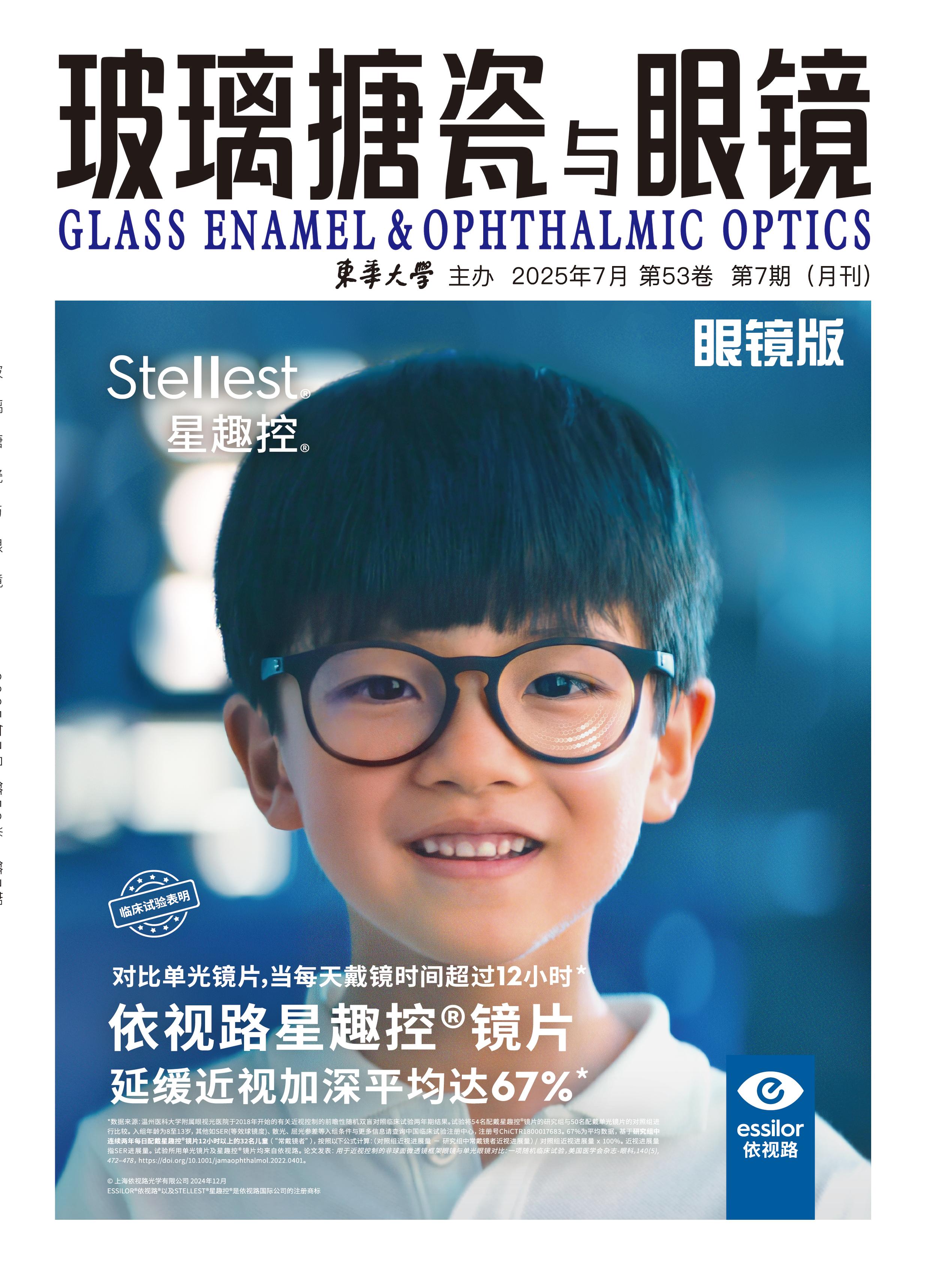
The corresponding relationship between the characteristic sintering image temperature and the sealing temperature of the low-temperature amorphous sealing glass was discussed by using sintering image method. The image temperature experiment was carried out on the characteristic sintering morphology of the low-temperature amorphous sealing glass. By comparing the characteristic sintering image temperature of the glass with the sealing temperature, the corresponding relationship between the two is explored and determined, thus providing a normative and convenient test method for the examination and verification of the sealing temperature. Results show that there is a highly matching relationship between the characteristic sintering image temperature and the sealing temperature. The evaluation and verification of the sealing temperature of the low-temperature amorphous sealing glass can be realized by the sintering image method.
The effects of different zirconia content and heat treatment process on the physical and chemical properties of lithium aluminum silicate glass were studied. Results show that when the value of zirconia (mol%) was increased from 2.0 to 3.5, it is beneficial to grain refinement, and the transmittance of glass ceramics increased from 70% to 85%. It had little effect on Vickers hardness and thermal expansion coefficient of glass, but decreased acid resistance and increased alkali resistance. When the zirconia (mol%) is more than 3.0, the composite crystalline phase of sillilaterite and zirconia nanocrystalline can be precipitated after crystallization, and the Vickers hardness of glass ceramics increased gradually from 6.38 GPa to 7.28 GPa. At the same time, the thermal expansion coefficient increased gradually under the influence of precipitated crystalline phase, but the transmittivity and chemical stability was reduced.
Three kinds of ultra-thin glasses with different thicknesses were rapidly annealed at different cooling rates, then the effect of annealing rates on the microhardness of ultra-thin glasses was explored. The test results show that the microhardness of ultra-thin glass can be greatly improved by using fast and reasonable annealing rates.
In the photoelectric glass substrate production line, quality judgment is generally made manually by person according to the results presented by inspection equipment. With the rapid development of display industry, the production capacity of production line increase continuesly, and there are some mistakes in the manual judgment. In order to reduce the occurrence of personnel detection mistakes and improve the accuracy of quality judgment, the existing methods for determining the quality of glass substrate of photoelectric display were optimized.
For glass furnace heated by electrode brick, it is necessary to push the electrode brick regularly with the erosion loss of electrode brick during operation. Through the optimization of electrified propulsion operation, the effect of power off propulsion method on technological parameters such as bottom temperature and liquid level was reduced. Then the technological process was optimized and the product yield and quality were improved obviously.
By analyzing the surface stress changes of rear cover glass for double photovoltaic modules, the stress distribution of rear cover glass surface is larger and more uneven than the front glass because of printing and drilling process. The main parameters effecting the rear cover glass surface stress such as cooling air pressure, heating time and heating temperature were analyzed. Expansion coefficient difference between solar glass and printing ink depends on the type of printing ink, which can affect the surface stress, impact test and four points bending, thus determine that the mechanical properties of rear cover glass is weaker than the front glass.
With the continuous upgrade of display industry, display panel resolution is gradually changing from HD to FHD, which makes the quality requirements of display glass substrates more stringent. For production enterprises, it is particularly critical to improve the quality to meet market demand. In order to meet the requirements of FHD market, this study researched on particle cleaning technology for display glass substrates surface. By adjusting spray angle, disc brush, roll brush pressure and rotation speed of cleaning equipment, thus improving the quality of glass baseboard for display. Particles on the surface of display glass substrate were reduced and verified by production process, which provide improved ideas and direction for particle cleaning for display glass substrates surface.
The equipment used for photovoltaic backplane glass screen printing is transformed from automotive glass screen printing equipment. Although it can meet the basic needs, it has many problems such as low production efficiency, easy to paste, and screen cleaning difficulty. This paper proposes a cylindrical screen mechanism that moves in circle, while the glass moves in a straight line. The oil knife and the scraper mechanism cooperate to print ink on the upper surface of glass, and the suction cup assembly sends the back glass to the inspection conveying section. The cylindrical screen mechanism is set up with two parallel sets, which can realize the functions such as non-stop screen change, automatic screen cleaning, etc., eliminating the necessary of intermittent operation after each screen change in traditional screen printing.










